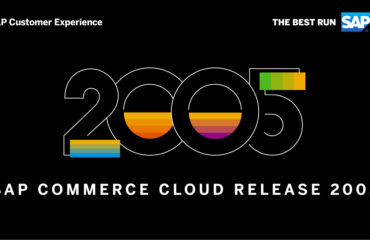n 2020, we all know that traditional experiences are no longer able to satisfy modern customer needs. Yes, KPIs and revenue are what matters in the end – but that’s only the result of combined efforts your favorite brand is making to keep you. Nowadays discussions are focused on providing the customer a seamless journey across all touchpoints – both online and offline, in order to build trusted, long-term relationships. That is the only way for brands to create a sustainable future. To do that, it is necessary to make strategic decisions that will infuse the importance of customer experience into every department and team. If you’re still not convinced, or you’re trying to figure out how to raise the awareness within your organization, here’s what you must know.
Customer Experience is a priority.
- 22% of Fortune 100 companies have a C-level customer officer, compared to 10% of Fortune 500 and 6% of Fortune 1000. Chief Customer Officer Council
- 73% of companies with above-average customer experience perform better financially than their competitors. Temkin Group | Qualtrics XM Institute
- A recent study shows that about two-thirds (65%) of respondents in the US feel that a positive experience with a brand is more influential than great advertising. Unfortunately, only half (49%) say that companies are providing a good customer experience today. PwC
- 87% of customers who say they had a great experience will make another purchase from the company, compared to 18% of customers who had a very poor experience. Temkin Group | Qualtrics XM Institute
The most successful brands put customer experience on top of their priorities. It is tied to financial indicators and has true strategic importance. There are so many conversations nowadays about the changing role of the CMO – moving into the area of customer experience, that spans many parts of the organization. It is necessary to invest in it and make it an essential part of your business strategy. If you haven’t done so, it’s about time to start.
Personalization makes a difference but requires trust.
- 63% of people say they’d be more open to sharing their data for a product or service they say they truly valued. PwC
- Only 54% of consumers trust brands to keep their data private. Futurum Research
- 59% of consumers who have experienced personalization say it has a noticeable impact on their purchasing. Infosys
Data privacy and personalization are tied together. Technology is changing customer behavior and making it more open for innovative approaches. However, a modern customer is also more aware of the data being shared in order to get personalized experiences. The value customers get in return must match, or better – exceed the expectations. In addition to that, transparency and the ability to control and adjust what is being shared is crucial in building trusted relationships.
Customer Experience is now really omnichannel.
- Companies that started online are expanding to physical stores, with 850 digital native brick-and-mortar stores expected to open in the next five years until 2024. JLL Real Estate
- 81% of retail shoppers conduct online research before buying. The overwhelming majority of retail consumers start their journey with online research. GE Capital Retail Bank
Mobile has become a real “front door to the store”. Digital capabilities are changing the way we shop online, but they are also changing our behavior in the offline world. They are empowering offline brand representatives to know us better and help us get what we want faster. We don’t expect an item to be out of stock if the website shows it’s available. We can easily check if another store has a better price. We can read reviews and compare products before we visit the store. We don’t view online and offline as separate worlds but as one experience the brand is providing as a whole. Therefore, it must be a synergetic relationship – and your business strategy must reflect that.
Emerging technologies are becoming a standard.
- Artificial intelligence will be a mainstream customer experience investment in the next couple of years. 47% of organizations will use chatbots for customer care and 40% will deploy virtual assistants. Gartner
- 78% of people expect to use an augmented, virtual, or mixed reality app to see how a product will look – such as how a piece of clothing might look on a shopper or how a piece of furniture might look in a home. Futurum Research
- Customers are willing to find the answers themselves. A billion service tickets are estimated to be raised automatically by customer-owned bots until 2030. Gartner
People are getting more open to technological enhancements, so far that they are becoming a standard. With the progress of technology, our expectations change too. We want to get quick and accurate information the moment we look for it. We want convenience and expect nothing less but perfect user experience. And we know, for sure, that technology is able to give us that. Chatbots and AI bring a whole new dimension to customer service and together create a more efficient and more intelligent process. Virtual, augmented and mixed reality are reshaping customer experience and have the potential to transform the way we’re making buying decisions. If you think there’s still time to think about leveraging these technologies – you are wrong, and you should start thinking about them right away.
To hear, we must listen.
- 77% of customers have a more favorable view of brands that ask for and accept customer feedback. Microsoft
- 80% of CEOs believe they deliver a superior experience. Only 8% of customers agree. Bain & Company
The difference between a brand promise and an actual customer experience is called the experience gap. So many brands believe that they are doing the most awesome thing right now, but the truth is they never asked customers what they want. Deep customer insights are the most powerful tool to have when setting the customer experience strategy. Connecting the operational data (what has happened) with the experience data (why has it happened) results in powerful information that can be used to improve and enrich every touchpoint in a special way. Let’s take that information, get back to basic customer needs and think about how we can innovate together to create experiences that really make a difference.




